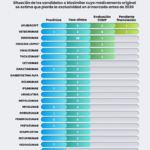All medicines, including biosimilars, must be clearly identifiable. Said identification usually results in the assignment of an invented name by the Marketing Holder. In the case of biosimilar medicines, most of which are approved through a centralized procedure, the European Medicines Agency (EMA) also assesses the specific name given to the medicine as part of the approval process.
In addition, this step is required by the legislation for all medicines in the European Union, which establishes that every drug will have a fantasy name (brand), or the name of the active ingredient together with the name of the company or brand.
As an example, it should be noted that the first two biosimilar drugs approved in Europe carry fantasy names (brand) Omnitropic y Valtropin, when its active substance is the same, somatropin or growth hormone. However, it must be remembered that Valtropin was never commercialized.
The name given to the active principle of the product, that is, to the molecule that produces the therapeutic activity, is known as INN (International Nonproprietary Name): INN in its acronym, and sometimes as a generic or common name.
In the process of evaluating a biosimilar candidate, the EMA essentially assesses whether both products (biosimilar and original reference medicine) are equivalent, which makes it possible to establish that they essentially contain the same active ingredient and, therefore, they are can grant the same DCI. It should be noted that the DCI proposal is made by the World Health Organization, usually at the request of the incumbent laboratory.
Evidently the trade (or invented) name of a medicine is essential because it makes it possible to identify that medicine and not another. All launched biosimilar medicines are clearly recognizable by their trade name (and even the batch number is known). With that safe prescription and dispensing is guaranteed that allows recording the product that each patient receives at all times.
This system allows monitoring the safe use of the drug throughout its life cycle: pharmacovigilance.
La European Union on pharmacovigilance also includes a provision relating to the identification of any biological product and stipulates that member states must ensure, through the methods of collecting information, that all biological medicines prescribed, dispensed or sold in their territory and that have been subject of an adverse reaction report, is identifiable.
In this way, all pharmaceutical and biopharmaceutical manufacturers use various techniques to be able to track their medicines at all times, which includes exclusive labeling, lot numbering and packaging.




